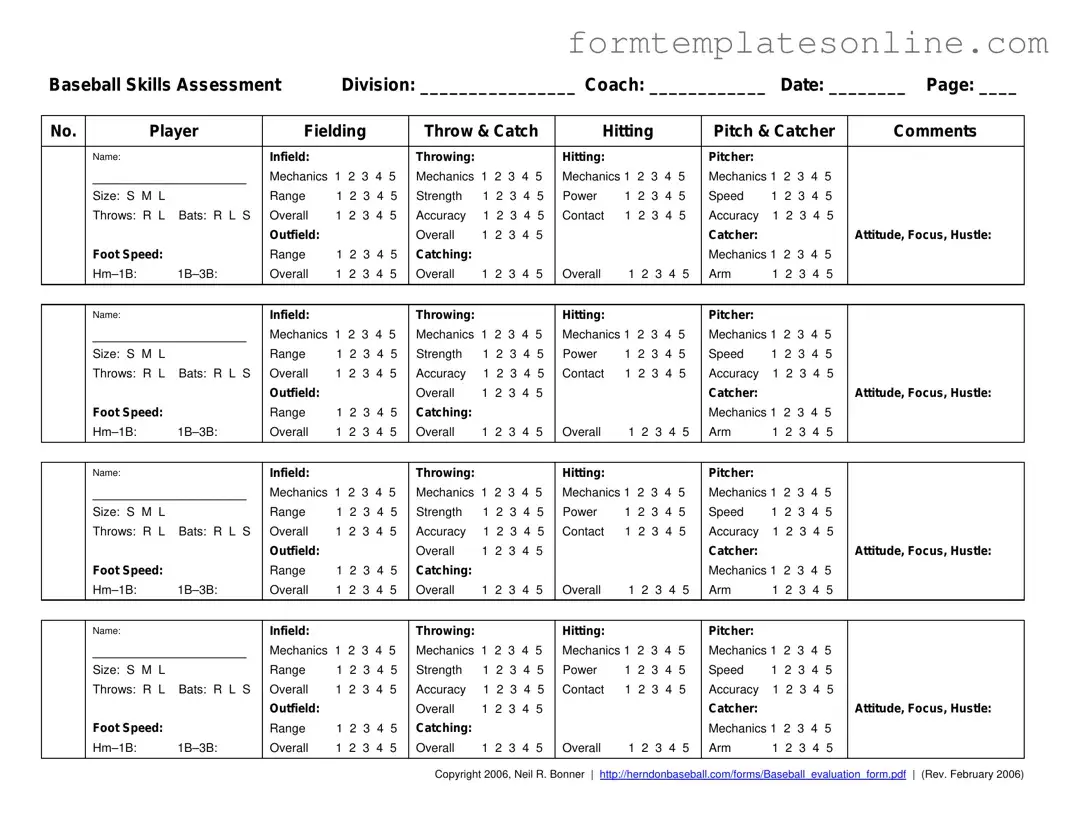What is the purpose of the Baseball Assessment form?
The Baseball Assessment form is designed to evaluate players' skills during tryouts for baseball teams. Coaches use this form to score players in various categories, including fielding, throwing, hitting, and pitching. This standardized format ensures a fair assessment of each player's abilities, helping coaches make informed decisions about team selection.
How is the scoring system structured on the form?
The scoring system on the Baseball Assessment form uses a five-point scale. A score of five indicates exceptional ability, while a score of one reflects extremely poor performance. Scores of two, three, or four represent varying levels of skill in between. Coaches assess players based on specific skills and assign scores accordingly, which helps to quantify their performance relative to peers.
What categories are included in the assessment?
The assessment includes several key categories: fielding (infield and outfield), throwing, hitting (mechanics, power, and contact), and pitching. Each category is further broken down into specific skills, allowing for a comprehensive evaluation of a player's capabilities. Additional factors such as attitude, focus, and hustle are also considered in the overall assessment.
How long do the tryouts typically last?
Tryouts generally last between two to two and a half hours. This timeframe allows for a structured evaluation of players across various skills, including base running, infield and outfield skills, and hitting. Water breaks are incorporated to ensure players remain hydrated and focused throughout the process.
Can the assessment form be used for different types of leagues?
Yes, the Baseball Assessment form is versatile and can be used for evaluating players in various contexts. While it is primarily designed for All-Star travel team selections, it is also suitable for draft purposes within house leagues. Coaches can adapt the evaluation criteria based on the specific needs of their league or team.
What should coaches consider when using the assessment scores for team selection?
Coaches should consider the overall scores from the assessment when selecting players for the team. A balanced approach is recommended, taking into account defensive skills, hitting abilities, and additional factors like attitude and hustle. The first eight players may be chosen based on quantitative scores, while the final positions can be filled using the coach's discretion regarding team dynamics.

